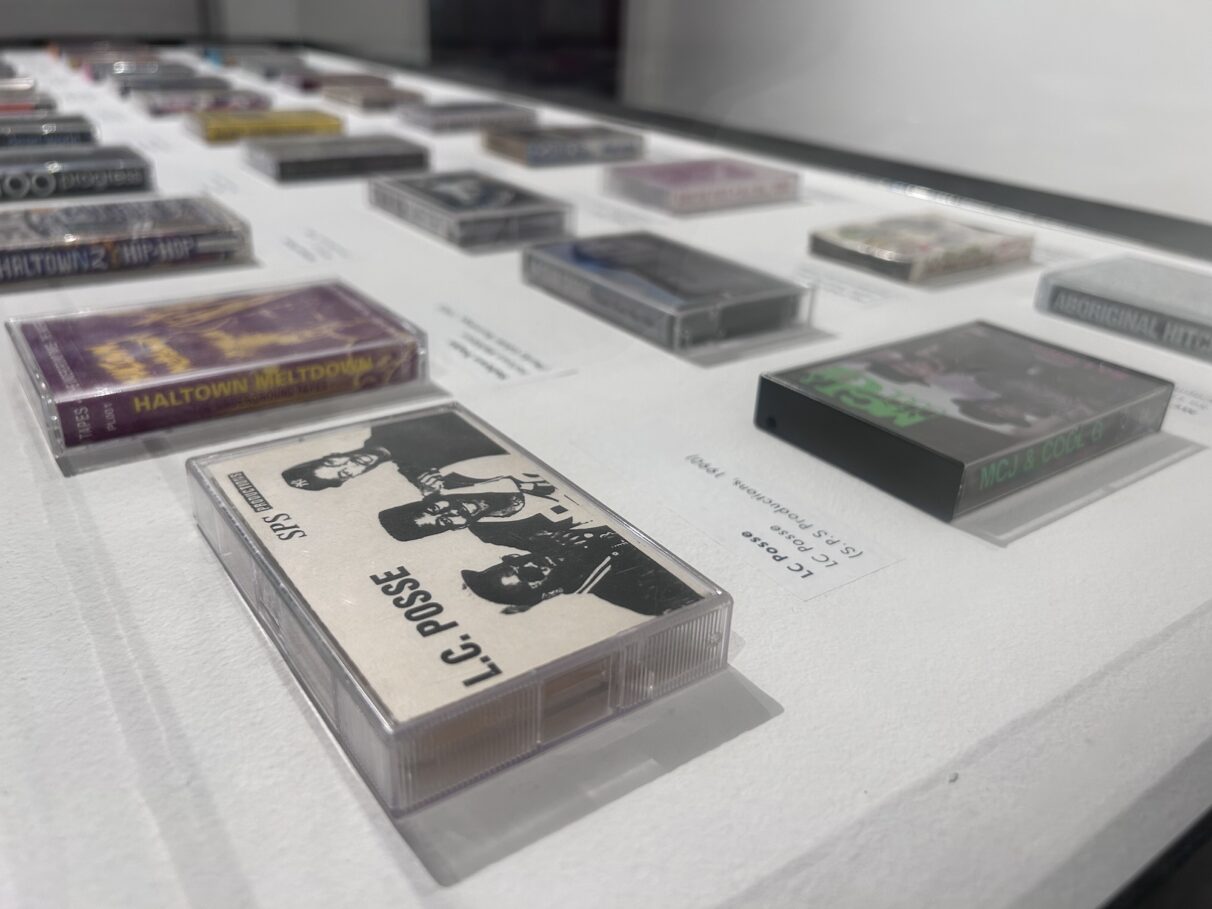Exhibition honours decades of Atlantic Canadian hip-hop
Massive collection started with a Local Dre cassette held together with masking tape

caption
Michael McGuire's collection of posters, cassettes and other memorabilia has grown since he started his collection in the 1980s.When you think of hip-hop music, Atlantic Canada doesn’t always come to mind.
But for over 30 years, Michael McGuire, who was convinced the region had a unique take on the genre, has been collecting local hip-hop history.
Now, the East of East Atlantic Canadian Hip Hop Archive is on display at the Mount Saint Vincent University art gallery.
The interactive exhibition is a digital and physical archive containing more than 2,100 audio recordings, 400 posters, nine hours of video, 850 CDs, 165 cassettes, 280 vinyl records and a chronology of hip-hop in Atlantic Canada from the 1980s to today. All of it is from McGuire’s personal collection.
McGuire, who performs hip hop under the name Hermit of the Woods, began amassing his collection in the mid-1980s with the cassette Gunplay by Local Dre. He says he bought it at Sam the Record Man in Halifax and it was the cassette’s homemade appearance that caught his eye.
“It was wrapped in Saran Wrap, and it was held together with a piece of masking tape. I was, like, I don’t even know what this is, but I have to have it,” McGuire said.
He was about 10 or 11 when he started collecting, gathering cassettes and records from local artists in his Halifax neighbourhood. He liked hip hop music, and even as a kid he recognized its value.
“How many of those [cassettes] wound up in a dumpster someplace, which is heartbreaking,” McGuire said. “On the one hand, it’s about preserving stuff, but it’s [also] about establishing a cultural narrative.”
Hip hop became established in Eastern Canada due to family connections through Philadelphia and New York, according to McGuire. Both cities are considered core to hip-hop culture.
“[Halifax residents] would go down there for March break for summer, and they would make tapes off the radio and bring those back, and those tapes got passed around,” McGuire said.
It meant hip hop fans here didn’t have to wait for music to come north through the commercial market. In time, the sound in Halifax became its own.
“It comes from so many different corners. You get the Mi’kmaq stuff, the Acadian and Chiac stuff, the African Nova Scotian stuff. You don’t get that anywhere else. It lives here, so maybe we could celebrate some of that stuff and cherish it.”
McGuire, who did his PhD thesis on how hip hop can be integrated into academia, worries that despite the genre’s origins as very community-oriented and driven, modern music production makes the community less connected.
“Nobody makes albums anymore. Everybody makes singles. They’ll put their stuff on Snapchat, Spotify, YouTube,” he said, noting this is part of his motivation for displaying the collection.

caption
Michael McGuire has 165 cassettes in his collection.McGuire’s collection doesn’t just focus on Nova Scotia. The music of Albert Dalton, a hip-hop artist from St. John’s, N.L., is a recent addition to the audio collection. He won MUSICNL 2020 Hip-hop Artist of the Year. He thinks the exhibition is a chance for people to see the different genres the Atlantic provinces have to offer.
“There’s a very folk-heavy culture, but having this on display lets other provinces know we can do a little more than just folk,” Dalton said in a phone interview.
McGuire plans to continue to grow his collection.
“I hope there is more recognition for [hip hop]. I hope we don’t have to keep fighting for table scraps in the arts community,” he said.
The exhibit at Mount Saint Vincent University is open until Nov. 23.

